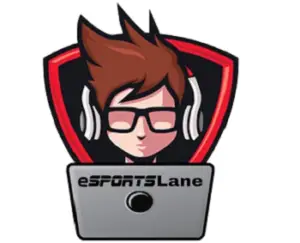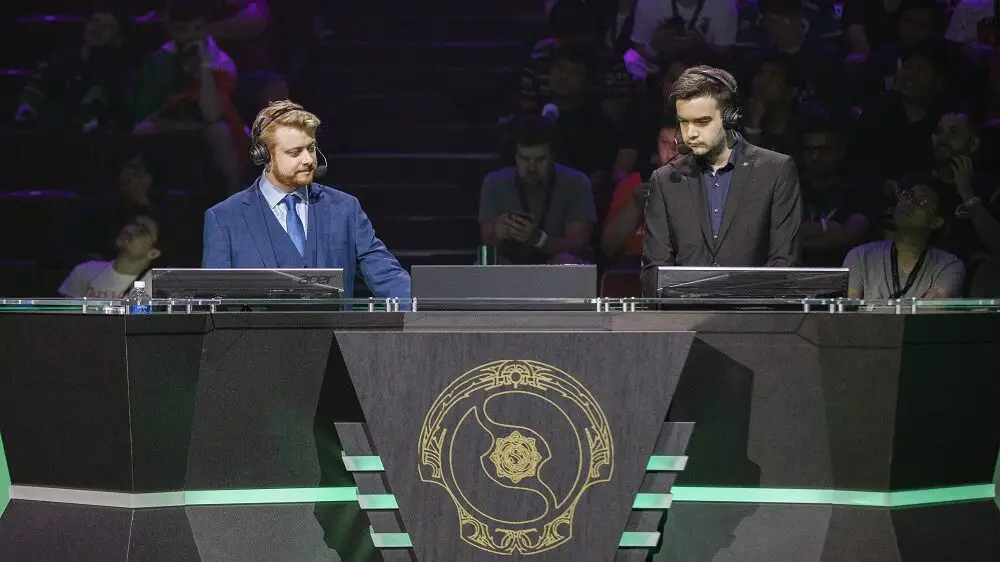If you are new to eSports or a beginner gamer or a fan who has often heard about shoutcasting and wondered about who is a shoutcaster and the origins of that name, here’s an exhaustive guide about the same.
While there’s not a lot which can come close to matching the thrill associated with being an e-gamer at the big stage, a gamer’s career isn’t the longest.
This is where an occupation like shoutcasting can allow someone to still feel the thrill of the game – in fact in some ways, be responsible to inject it to the broadcast – and still be a part of the action after having retired from competitive gaming.
Table of Contents
Who is a Shoutcaster?
A shoutcaster is a broad term used to describe an individual who commentates on eSports matches, providing play by play commentary or an analytical view either from behind a desk or by hosting it from stage at the venue.
In basic terms, a shoutcaster is no different from an eSports commentator, with a few differences between the different types of a shoutcaster and their job profiles. Those have been explained in the section below.
A shoutcaster’s main role is casting, or shoutcasting, which in simple terms is to try and inform the audience about what’s happening while being entertaining at the same time.
Very often, instead of using shoutcasting, the term casting is used in eSports and often gets mixed up with broadcasting especially if one is looking on in from other sports. Broadcasting and shoutcasting are two different aspects of eSports.
Why is Commentating called Shoutcasting in eSports?
As mentioned earlier, casting is a short form for shoutcasting, but the reason why it’s called so isn’t because commentators are expected to shout – in fact they aren’t always expected to do so – but because it’s named after a Winamp plugin by the name of Shoutcast.
For those who do not know what is Winamp; it was a 1990s’ media player and the Shoutcast plugin allowed individuals to build one’s own radio station and broadcast it to the world over internet.
In the early days of eSports, not too many countries had these competitions live on television with any kind of commentary with the exception of may be South Korea. It was using this Shoutcast plugin that individuals would record their play by play during eSports competitions and fans wanting to listen to the commentary was to synchronize the audio with the video.
Methods of Shoutcasting
Shoutcasting could be of two basic varieties; one is commentating off one’s desk or from a studio typically for viewers online and the second type is hosting an eSports competition from the venue, for both online viewers and those present at the venue.
A shoutcaster commentating in a competition needs to understand the game and the players involved, the strategies, and the context to it and at the same time commentate with excitement and fervour.
A host’s role is somewhat similar to a master of ceremony’s, in that he/she needs to get the event started, keep the crowds engaged and interview players before or after the matches.
An eSport commentator providing live commentary can either be a PBP (play by play) or a colourcaster.
What is the difference between a PBP and a colorcaster?
A PBP, or a play by play shoutcaster usually calls out the game live in front of him/her, adding excitement and thrill to the game, and at times hyping things when the going is slightly slower in the game.
On the other hand, a colorcaster is usually an analyst who digs deep into strategy, explaining for e.g. why a play was made or how can a team come back from the situation they find themselves in.
Interactions between PBP and Colorcaster
In big competitions, the pair of shoutcasters commentating on matches usually consist of a PBP and a Colorcaster and their interaction plays a huge part in making the broadcast more enjoyable.
The PBP usually controls the narrative around the game and brings in the colorcaster to ask him/her the tough questions around strategic calls during or those around the bigger picture in the competition.
Play by play commentary can get very loud and exciting but there are moments during the game where the commentary needs a change in momentum or other times when something tactical needs to be explained and a Colorcaster in involved.
Why is it called a Colourcaster?
A commentator or an eSports analyst is called a colorcaster because he/she adds color to the broadcast through analysis and insightful views regarding game play or tactics.
Do eSports Players Hear the Shoutcaster Commentary while Playing?
Well, yes and no.
Technically, it depends on the level of the tournament but at the highest, professional level, it makes sense for players to not be allowed to hear either the shoutcasters or the crowd. As a result, they are put up in sound-proof rooms.
That doesn’t always happen and there are times when the players are able to carve out threats and tactics from the reactions of both, the shoutcasters and the crowd.
At other times, players wearing cotton plugs under their headphones, to cancel out the commentary which could act as a distraction as well.
How to Become an eSports Shoutcaster?
We will be explaining this in a greater detail in a separate piece but to give a gist of what should one do to get into an eSports casting career, here’re a few things to keep in mind.
- Try and become an expert at at least one of the main eSports games. Having some form of expertise in most of the games is good but it also makes a lot of sense to be the go-to person for one of them because it helps create that sense of trust with fans
- As mentioned in point 1, try not being a Master of One Trade, Jack of None! Um, well yes, be excellent at one game but it doesn’t mean you shouldn’t try and become adept at other titles too.
- Have a personality. I mean yes, it’s all good to be the master of a couple of eSports games but if you have heard the good shoutcasters, they make things interesting, even erring on the side of over-zealousness than being boring drabs.
- Try shoutcasting for games which are telecast on YouTube and Twitch. These could be past games but you could still shoutcast, and upload them to try and garner your own following. This allows you to gain a ‘resume’ if you haven’t been a pro gamer yourself and at times, some of the critical feedback coming your way can go miles improving your work.
- Know what to say and what not to. Some of these games are very quick and finish in the blink of an eye – well, probably a little more than that – and knowing what to talk about and what to let go is crucial. Especially what to let go.
- Have a backup option. It looks very hunky-dory from the outside – and it is a lot of fun if you do make it big – but not everyone goes the distance. One must also realise eSports is a fast-growing industry but technology changes quickly and shoutcasting is but a small part of eSports. Graduate first, get yourself your degree and think of a backup plan if things don’t go your way shoutcasting.
Here’s our exhaustive guide on things to remember as a beginner shoutcaster.
How much does an eSports Shoutcaster earn?
This is a very rough estimate of an eSports shoutcaster’s salary but if you want to know more, read our in-depth piece on how much do eSports casters earn here.
The starting salary of a decent quality shoutcaster could be roughly anywhere $20,000 to $25,000 each year while those with experience and at the top of their game could even $75,000 per annum.
Freelancers earn more on a per day basis, even up to $700/day at times but it comes with its own risks since you aren’t contractually bound. Typically, it’s more advisable to go freelance after having been a full-time, contracted shoutcaster for a decent length and having earned a name in the market.


